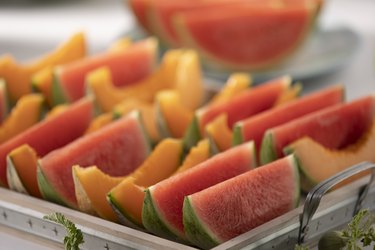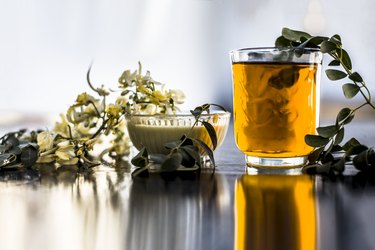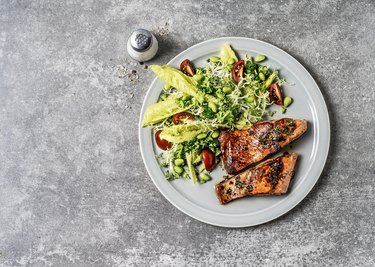
Complete Guide to Low-Acid Fruits and Vegetables for Managing Acid Reflux
Your body produces fluids with varying pH levels, from acidic gastric fluid (pH 1.35-3.5) to slightly alkaline bile (pH 7.6-8.8). While you can't change your blood's pH through diet, eating low-acid foods may help manage certain health conditions.

Sliced watermelon and cantaloupe on plate
The pH scale ranges from 0 (most acidic) to 14 (most alkaline), with 7 being neutral. Foods with a pH above 4.6 are considered low-acid foods.
Common Low-Acid Fruits (pH):
- Cantaloupe (6.17-7.13)
- Honeydew (6.3-6.7)
- Black olives (6.0-6.5)
- Banana (4.5-5.2)
- Watermelon (5.2-5.8)
- Papaya (5.2-5.7)
Common Low-Acid Vegetables (pH):
- Spinach, cooked (6.6-7.2)
- Mushrooms, cooked (6.2)
- Potato (6.1)
- Brussels sprouts (6.0-6.3)
- Lettuce (5.8-6.0)
- Cucumber (5.1-5.7)

Glass of steeping green tea

White bottle of soy milk

Grilled salmon with microgreens garnish
Benefits of a Low-Acid Diet:
- May help manage GERD and acid reflux symptoms
- Could reduce risk of chronic kidney disease
- May help prevent kidney stones
- Encourages consumption of more fruits and vegetables

Cup of steeping green tea

Glass bottle of soy milk

Salmon fillet with avocado and microgreens
Important Considerations:
- Consult a healthcare provider before starting a low-acid diet
- Not everyone needs to monitor food pH levels strictly
- Focus on a balanced diet rich in fruits, vegetables, and whole grains
- Avoid trigger foods if you have GERD (like citrus, garlic, and onions)
- Home pH test kits for urine aren't reliable indicators of body pH
A low-acid diet may be especially beneficial for those with GERD, as it can help prevent Barrett's esophagus, a precancerous condition. However, for most people, simply eating a balanced, nutritious diet is sufficient.
Related Articles

How to Lose 30 Pounds in a Month: A Dietitian's Complete Weight Loss Guide

